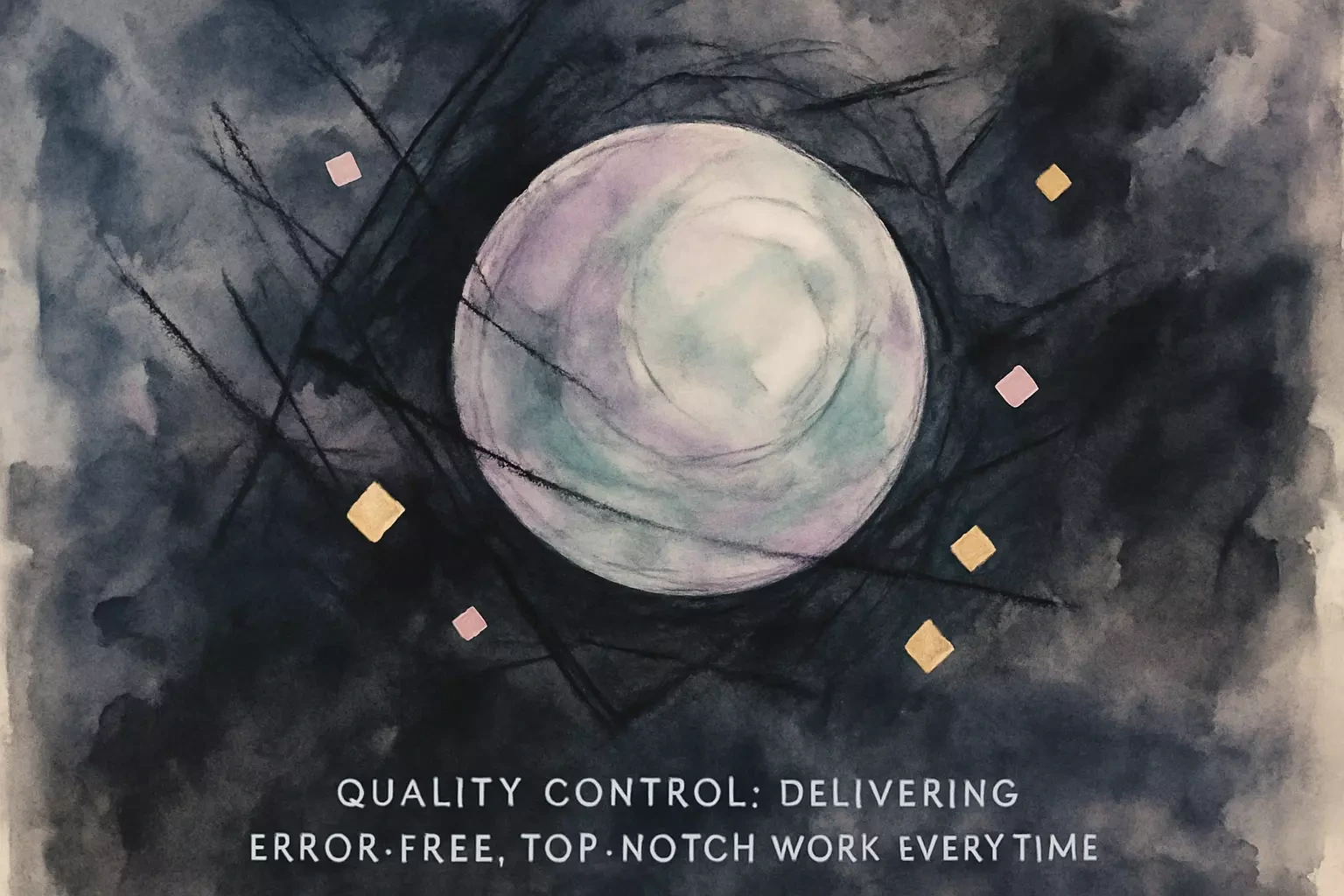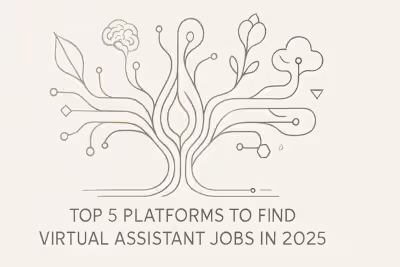Quality Control: Delivering Error-Free, Top-Notch Work Every Time

Quality Control: Delivering Error-Free, Top-Notch Work Every Time
Building a Quality-First Mindset
Thoroughly Understand Client Expectations
Create and Use Standard Operating Procedures (SOPs)
The Pre-Delivery Quality Assurance Checklist
The Two-Pass Proofreading Method
Fact-Check and Verify All Data
Read It Aloud
Leveraging Technology for Flawless Execution
Use Grammar and Plagiarism Checkers
Utilize Task Management Templates
Implementing a Feedback and Improvement Loop
Actively Seek Constructive Feedback
Maintain a 'Lessons Learned' Log
Conclusion
References
Quality Control: Delivering Error-Free, Top-Notch Work Every Time
In the competitive world of virtual assistance, the quality of your work is your ultimate calling card. Delivering error-free, high-caliber results consistently is what builds a stellar reputation and ensures client loyalty. A robust quality control process is not just about avoiding mistakes; it's about demonstrating professionalism and value. This commitment to excellence relies on strong client communication and is powered by the right set of VA tools. For any business ready to hire a virtual assistant, finding a candidate with a proven quality control mindset is a top priority.
Think about it this way: every piece of work you deliver is a reflection of your brand. When clients receive flawless deliverables time after time, they stop worrying about quality and start focusing on growth. That's when you transition from being just another VA to becoming an indispensable partner in their success.
Building a Quality-First Mindset
Quality control starts before you even begin a task. It's a mindset focused on precision and understanding the client's expectations deeply. This foundational approach prevents errors before they happen.
I've learned that the best VAs don't just complete tasks—they anticipate needs and exceed expectations. This proactive approach to quality begins with how you think about each project. Instead of rushing to start, take a moment to visualize the perfect end result. What would make your client say "wow"? That vision becomes your north star.
Thoroughly Understand Client Expectations
Begin each project by ensuring you have a crystal-clear understanding of the client's goals and their definition of 'quality.' Ask detailed questions about desired outcomes, formats, and brand voice to align your work perfectly with their vision.
Here's what I always ask my clients before starting any project:
What does success look like for this task?
Are there any examples of similar work you've loved?
What's your biggest concern about this project?
How will you use the final deliverable?
Don't be shy about asking follow-up questions. I once had a client request "a simple report" that turned out to need complex data visualization. By digging deeper during our initial conversation, I saved us both from disappointment and rework. Remember, clients appreciate thoroughness at the beginning far more than surprises at the end.
Sometimes clients don't know exactly what they want until they see it. In these cases, I suggest creating a quick mock-up or outline first. This gives them something concrete to react to and helps clarify expectations before you invest significant time.
Create and Use Standard Operating Procedures (SOPs)
For recurring tasks, develop a documented step-by-step process. SOPs ensure consistency and accuracy, regardless of the client or project, and serve as your personal quality assurance guide.
Your SOPs don't need to be fancy. Start with a simple checklist in a Google Doc. For example, my social media posting SOP includes:
Check content against brand guidelines
Verify all links work correctly
Confirm hashtags are relevant and spelled correctly
Double-check posting schedule and time zones
Preview how posts will appear on each platform
As you refine your processes, your SOPs will evolve. I update mine monthly based on new learnings or client feedback. This living document approach means your quality improves continuously rather than staying static.
The real magic happens when you share relevant parts of your SOPs with clients. It shows them you take their work seriously and have systems in place to ensure consistency. Many clients have told me this transparency was a key factor in choosing to work with me long-term.
The Pre-Delivery Quality Assurance Checklist
Never send off work without a final, systematic review. A pre-delivery checklist is your safety net, catching potential errors and ensuring every deliverable meets the highest standards.
I can't stress this enough: the few extra minutes you spend on quality checks will save you hours of fixing mistakes later. Plus, it protects your reputation. One sloppy deliverable can undo months of excellent work in a client's mind.
The Two-Pass Proofreading Method
Review your work at least twice. The first pass should focus on content, clarity, and fulfilling all instructions. The second pass should be dedicated solely to grammar, spelling, and formatting errors.
During your first pass, ask yourself:
Does this fully address what the client requested?
Is the information accurate and complete?
Does the flow make sense?
Have I included all requested elements?
For the second pass, I recommend waiting at least 30 minutes after completing the work. Fresh eyes catch more errors. Focus purely on the technical aspects: spelling, grammar, punctuation, and formatting consistency. Don't get distracted by content changes during this pass—that's what the first review was for.
Pro tip: Change the font or background color before your second review. This simple trick forces your brain to see the content differently, making errors more noticeable. I've caught countless typos this way that I'd missed in multiple previous reads.
Fact-Check and Verify All Data
If your work includes data, statistics, names, or other factual information, double-check every detail against a reliable source. Accuracy is a key component of quality work.
Create a fact-checking routine that works for you. I keep a spreadsheet where I log every statistic or claim I make, along with its source. This not only ensures accuracy but also provides quick references if clients ask for sources later.
Be especially careful with:
Numbers and percentages
People's names and titles
Company names and spellings
Dates and timelines
Technical specifications
URLs and email addresses
One misplaced decimal or misspelled name can damage your credibility instantly. I once saw a VA lose a major client because they consistently misspelled the CEO's name in email campaigns. Such a small detail, but it spoke volumes about attention to detail.
Read It Aloud
Reading your written work aloud helps you catch awkward phrasing, typos, and grammatical mistakes that your eyes might skim over. This simple technique is surprisingly effective for polishing any text.
When you read silently, your brain often autocorrects errors without you noticing. Reading aloud forces you to process each word individually. You'll immediately notice when something sounds off or when a sentence runs too long.
If you're in a shared space, try whispering or using text-to-speech software. The key is hearing the words rather than just seeing them. I've found this technique especially valuable for email communications, where tone is crucial but easily misinterpreted.
Leveraging Technology for Flawless Execution
While human oversight is irreplaceable, technology can significantly enhance your quality control process. Integrating these tools into your workflow can help automate checks and improve accuracy.
The right tools don't replace your judgment—they augment it. Think of them as your quality control co-pilots, catching things you might miss when you're focused on the bigger picture.
Use Grammar and Plagiarism Checkers
Tools like Grammarly are essential for catching spelling and grammar errors. For content creation, running work through a plagiarism checker ensures originality and protects both you and your client.
But don't rely on these tools blindly. Grammar checkers sometimes suggest changes that alter meaning or don't fit the client's brand voice. Use them as a first line of defense, not the final word. I always review each suggestion critically before accepting it.
For plagiarism checking, even when creating original content, it's worth running a check. Sometimes we unconsciously repeat phrases we've read elsewhere. A quick scan protects against accidental duplication and gives clients confidence in your work's originality.
Beyond the basics, explore specialized tools for your niche. If you work with data, tools like Excel's formula auditing features are invaluable. For design work, accessibility checkers ensure your creations work for all users. The key is building a toolkit that matches your service offerings.
Utilize Task Management Templates
In your project management tool, create templates for recurring projects that include a quality check subtask. This ensures that the review process is a mandatory step that never gets skipped.
My project templates always include:
Initial client briefing checkpoint
Mid-project progress check
Pre-delivery quality review
Post-delivery follow-up
By building these checkpoints into every project from the start, quality control becomes automatic rather than an afterthought. It's much harder to skip a step when it's staring at you from your task list.
I also use conditional logic in my templates. For example, content projects trigger grammar check reminders, while data projects prompt verification steps. This customization ensures relevant quality checks for each project type without creating unnecessary work.
Implementing a Feedback and Improvement Loop
Quality control is an ongoing process, not a one-time check. Embracing feedback and continuously refining your methods is what separates the professionals from the amateurs.
The VAs who thrive long-term are those who view every project as a learning opportunity. They don't just deliver and move on—they actively seek ways to improve their next delivery.
Actively Seek Constructive Feedback
Don't just deliver work; ask your clients for feedback. Inquiring about what went well and where there's room for improvement shows a commitment to excellence and helps you refine your skills.
Here's my go-to feedback request template: "Hi [Client], I've just submitted [project]. I'm always looking to improve my service. Could you share what worked well and anything you'd like done differently next time? Your honest feedback helps me serve you better."
Most clients appreciate this proactive approach. It shows you're invested in their success, not just completing tasks. Even when feedback is critical, receive it gracefully. Thank them for their honesty and implement their suggestions in future work.
Schedule regular feedback sessions with long-term clients. Quarterly check-ins work well for most relationships. These conversations often reveal preferences and pain points that clients wouldn't mention otherwise, giving you invaluable insights for improving your service.
Maintain a 'Lessons Learned' Log
When you do make a mistake, document it and what caused it. This log becomes a valuable resource for avoiding similar errors in the future and continuously improving your personal SOPs.
My lessons learned log includes:
Date and project
What went wrong
Root cause analysis
Corrective action taken
Process change implemented
For example, I once sent a newsletter with the wrong date. My root cause analysis revealed I was rushing through final checks late at night. The solution? No deliveries after 8 PM, and all date-sensitive content gets highlighted for special attention during reviews.
Review your log monthly to identify patterns. Are certain types of errors recurring? Do mistakes happen more often with specific clients or project types? These insights help you develop targeted improvements rather than generic "be more careful" resolutions.
Conclusion
Quality control isn't about perfection—it's about consistency and continuous improvement. By building quality checks into every stage of your work, from initial planning through final delivery and beyond, you create a reputation for reliability that clients value above all else.
Remember, every deliverable is an opportunity to strengthen your client relationships and build your professional reputation. The time you invest in quality control pays dividends through client retention, referrals, and the ability to command premium rates for premium work.
Start implementing these quality control strategies today. Pick one area to focus on this week, whether it's creating your first SOP or establishing a feedback routine. Small, consistent improvements in your quality control process will compound over time, transforming you from a good VA into an exceptional one.
Your commitment to quality is what will set you apart in a crowded marketplace. Make it your competitive advantage, and watch your virtual assistance career flourish.
References
Like this project
Posted Jun 30, 2025
Stand out as a top-tier virtual assistant by delivering flawless work. Learn our essential quality control process for consistent, high-quality results and client satisfaction.
Likes
0
Views
7








